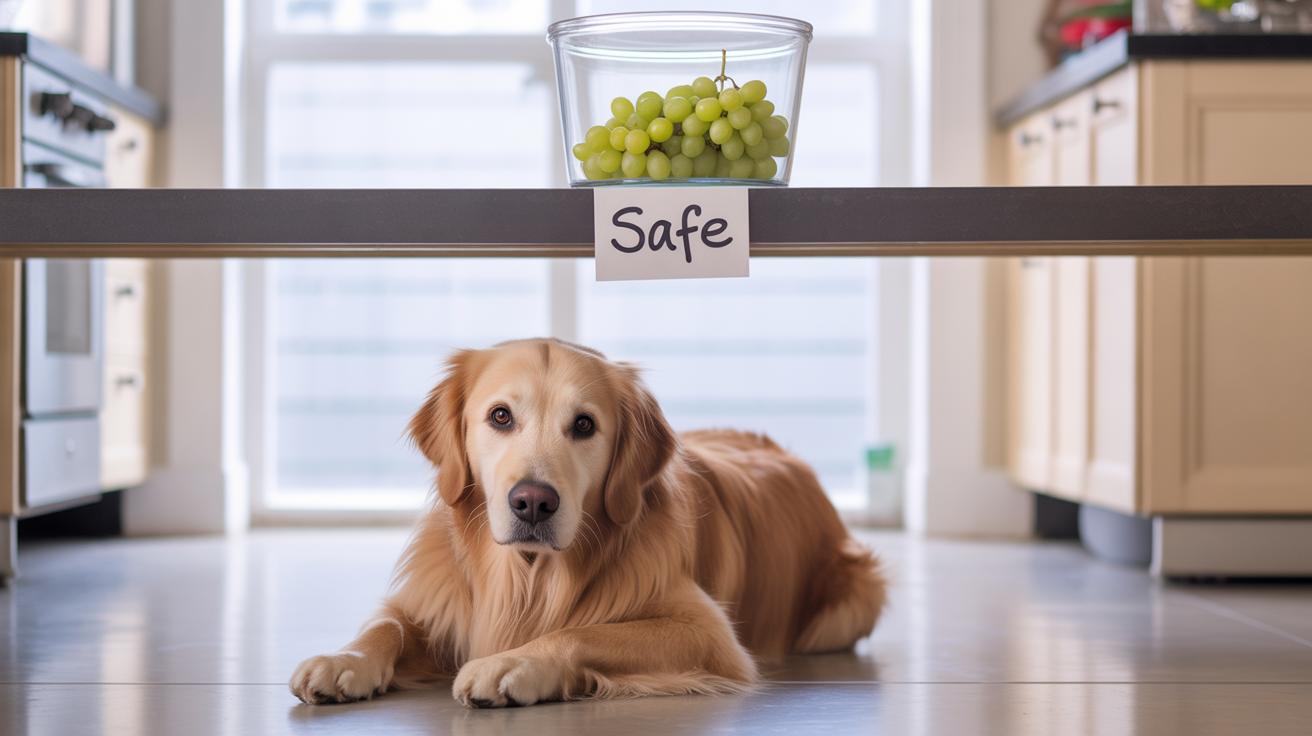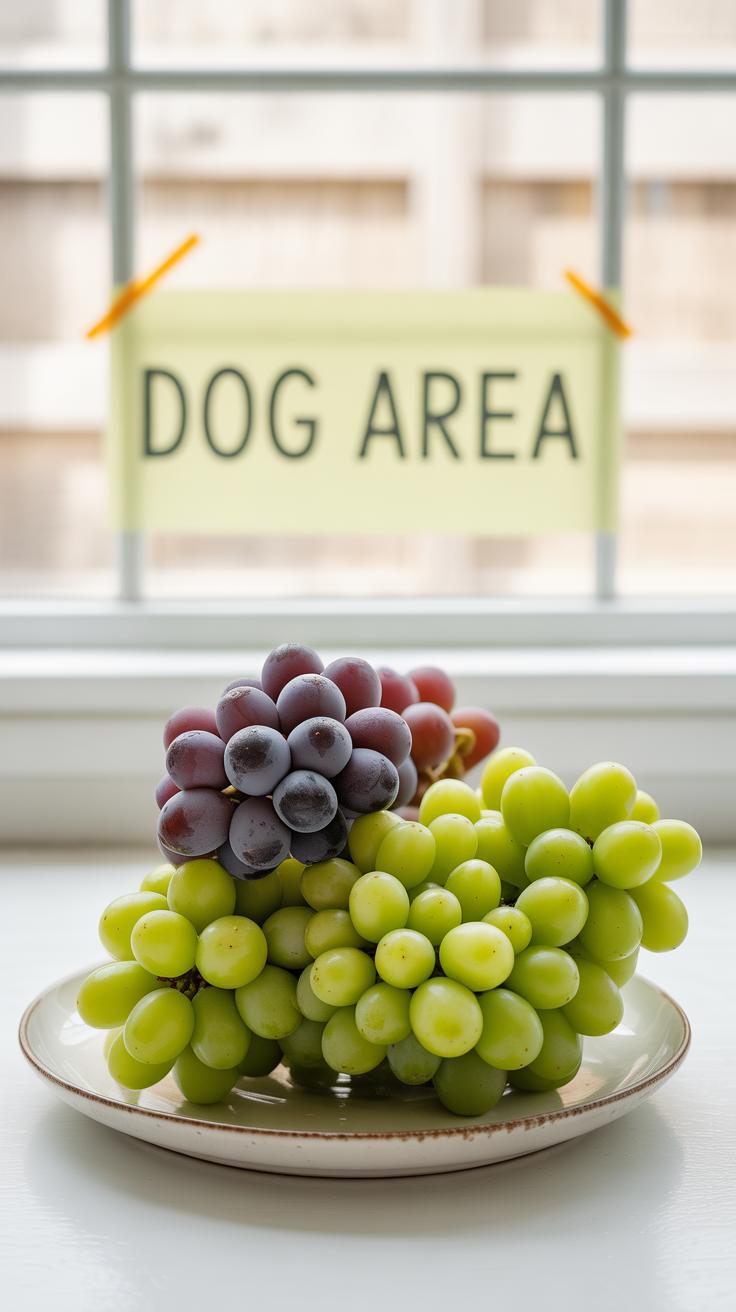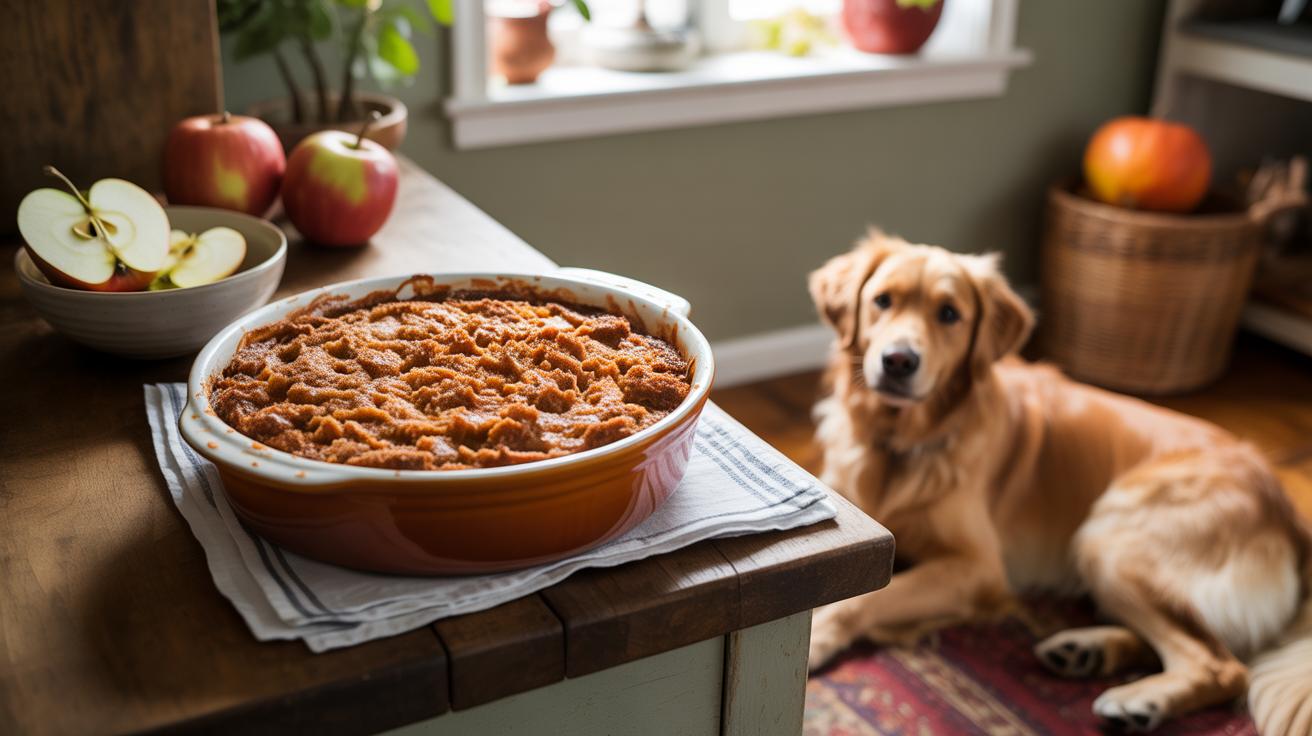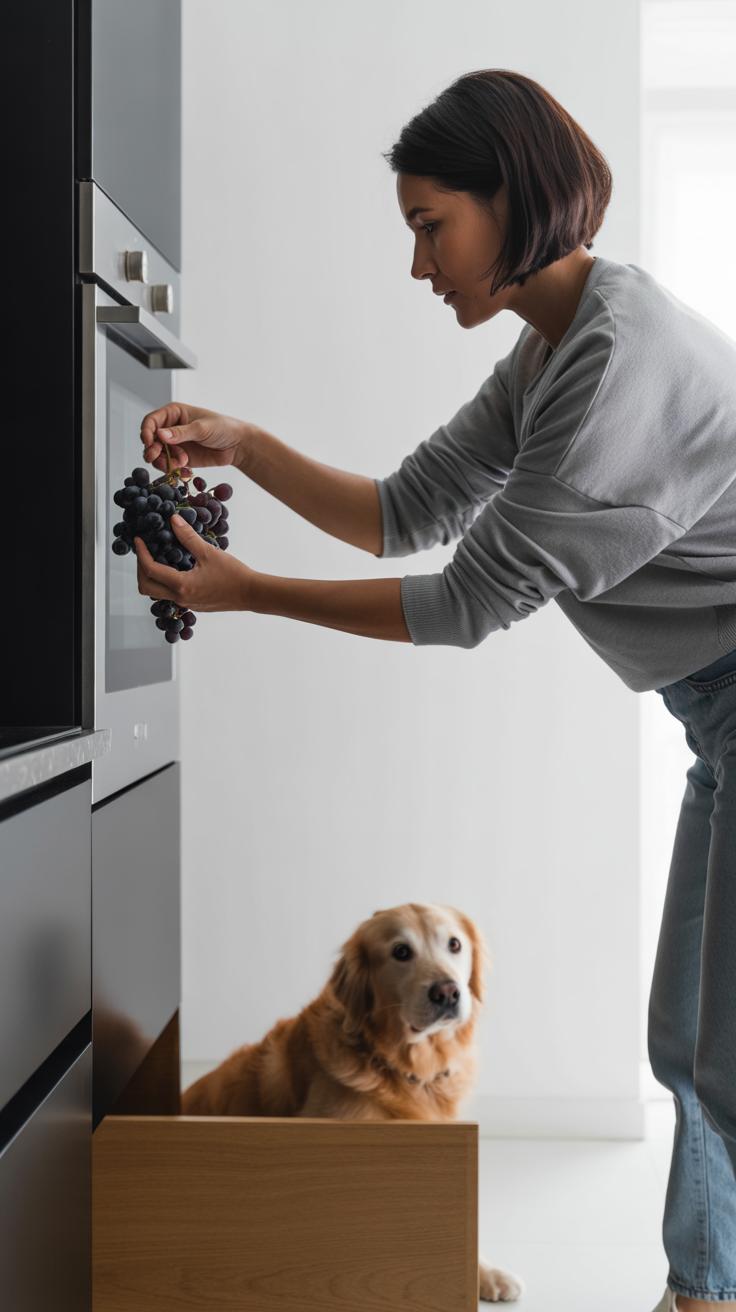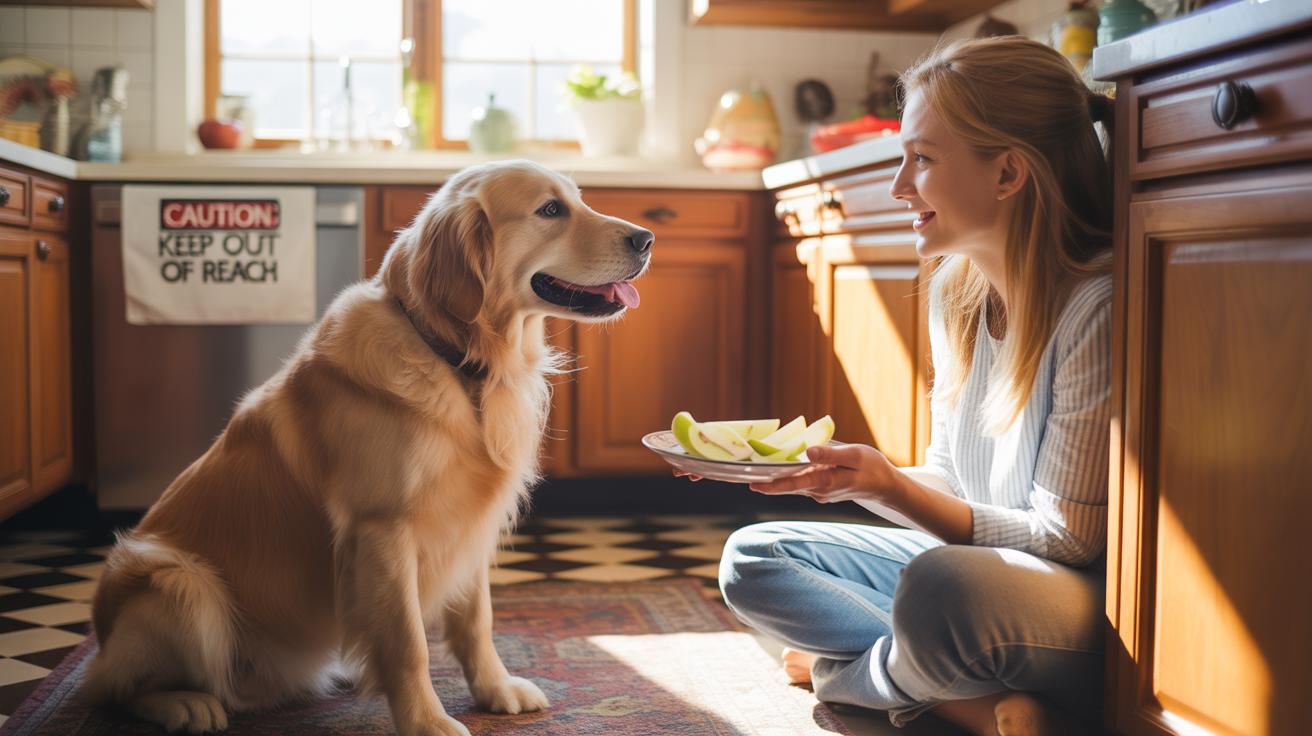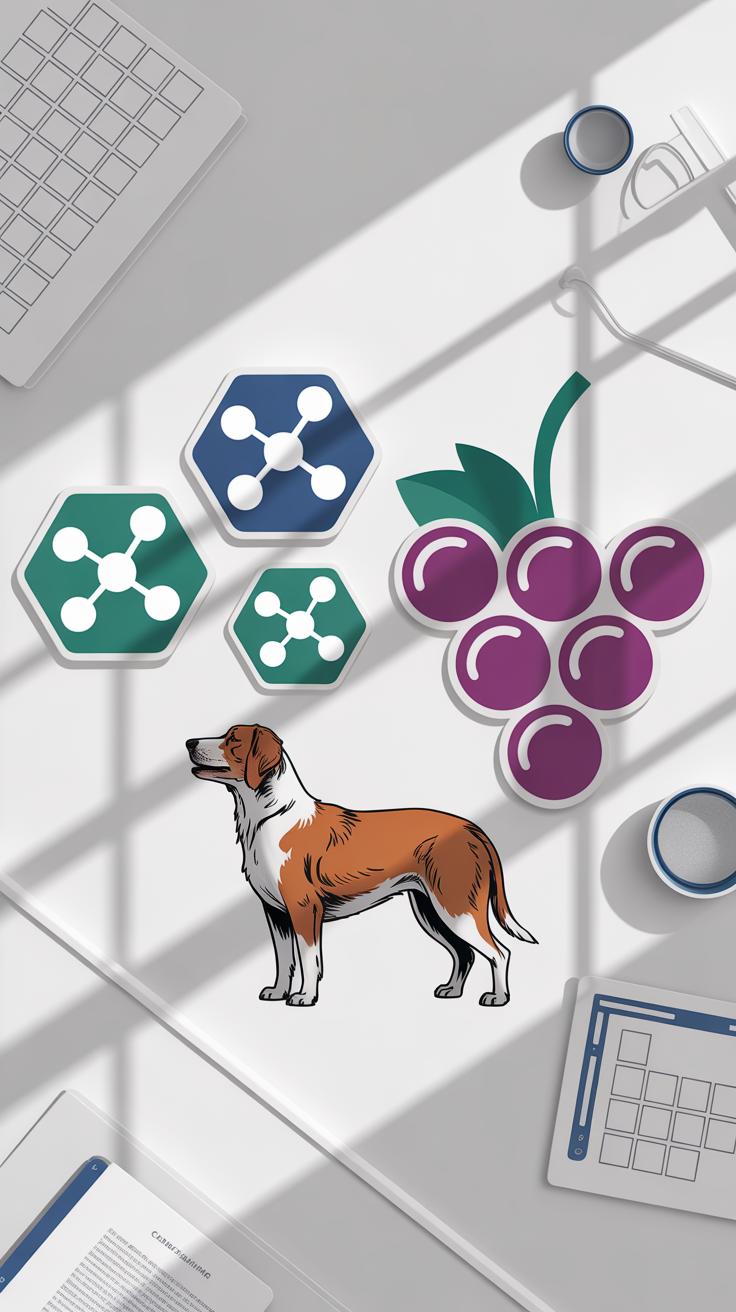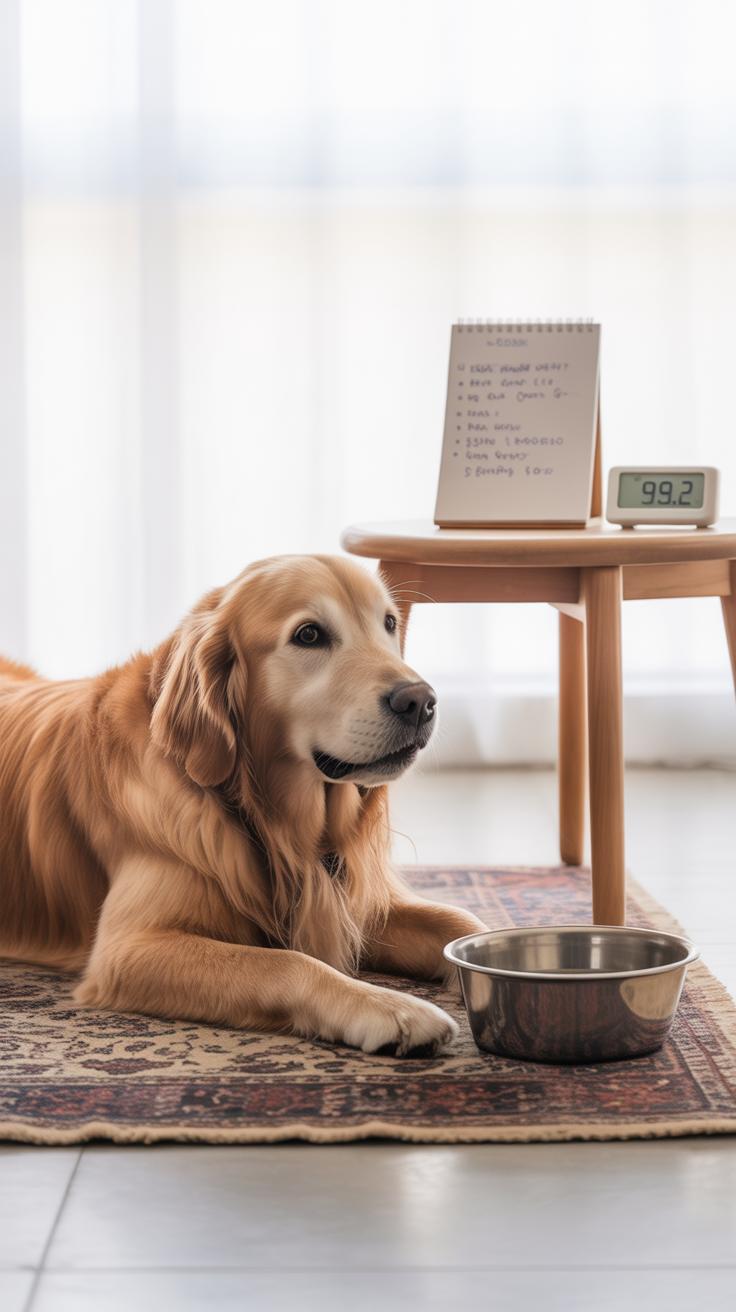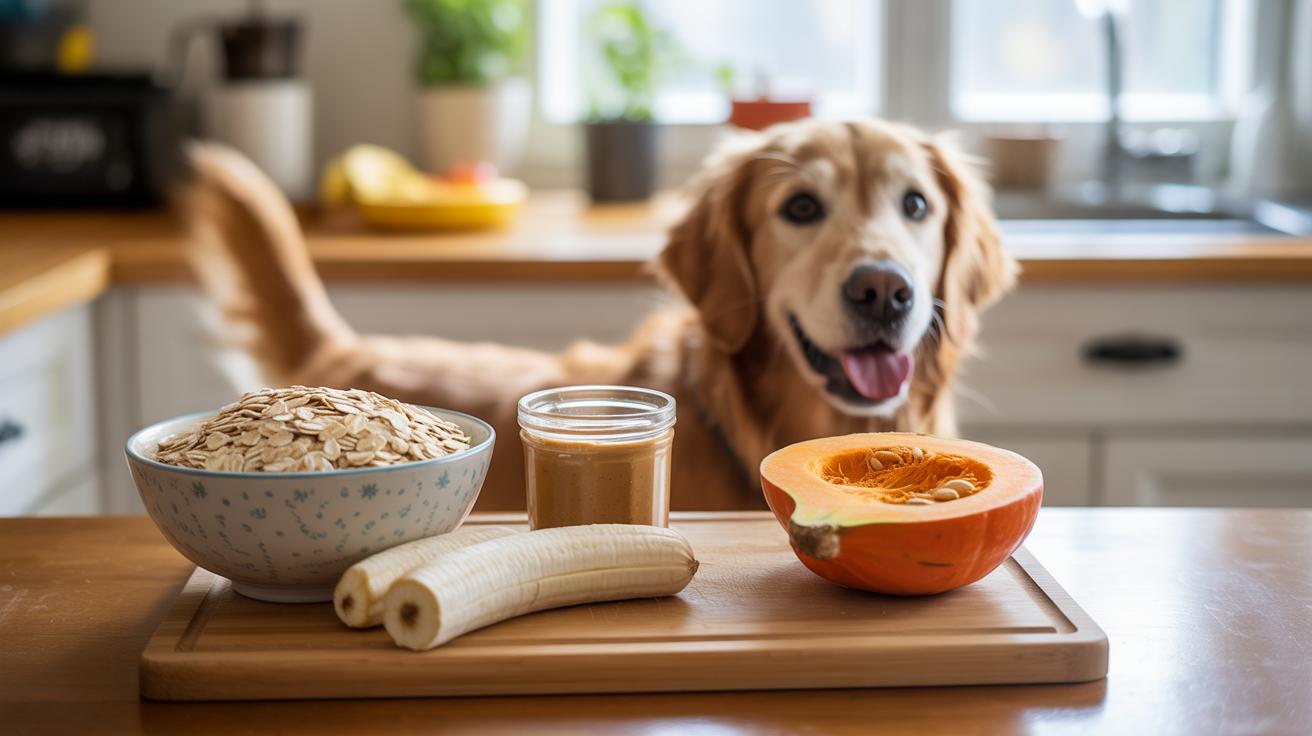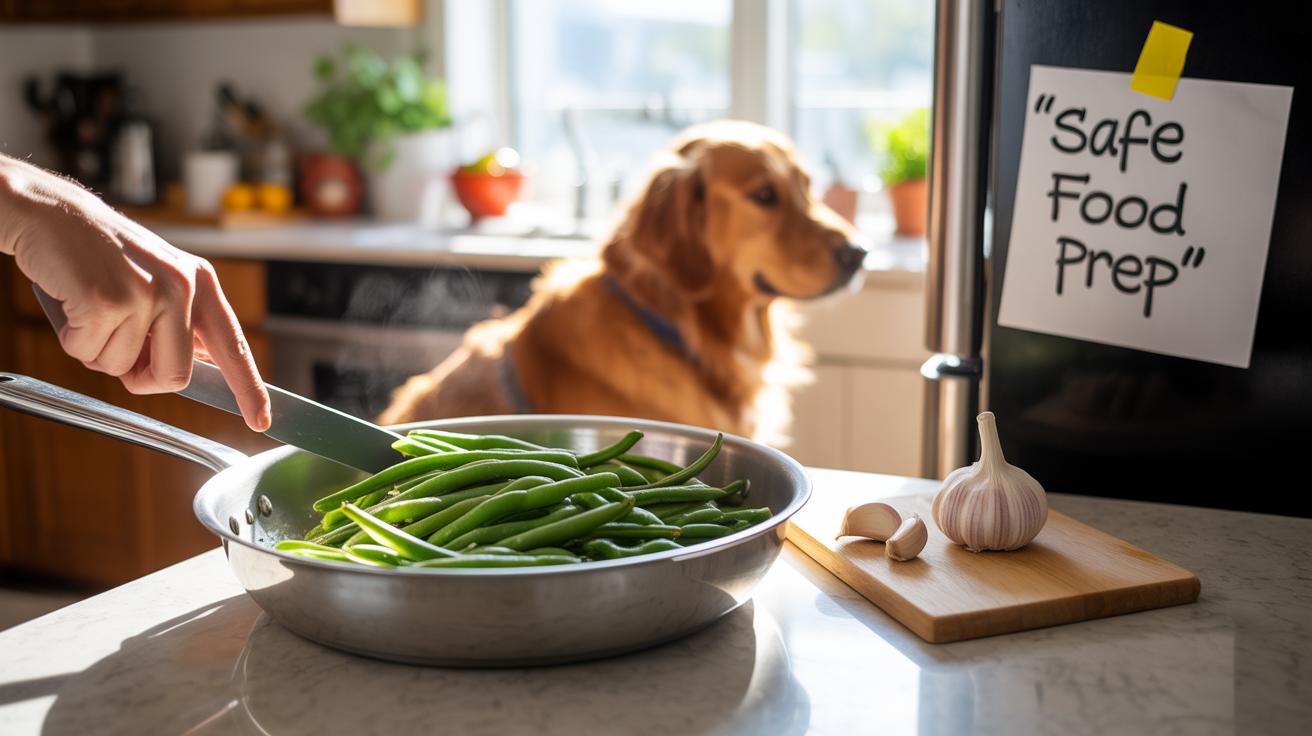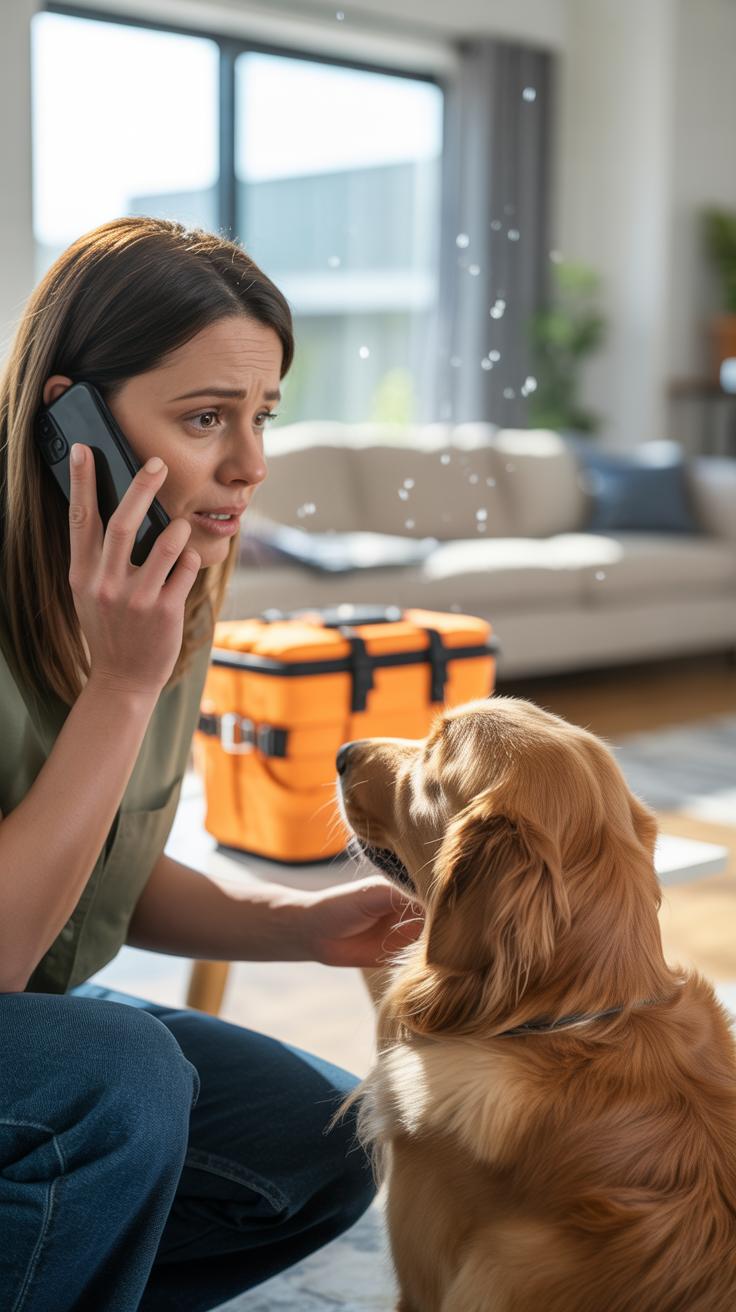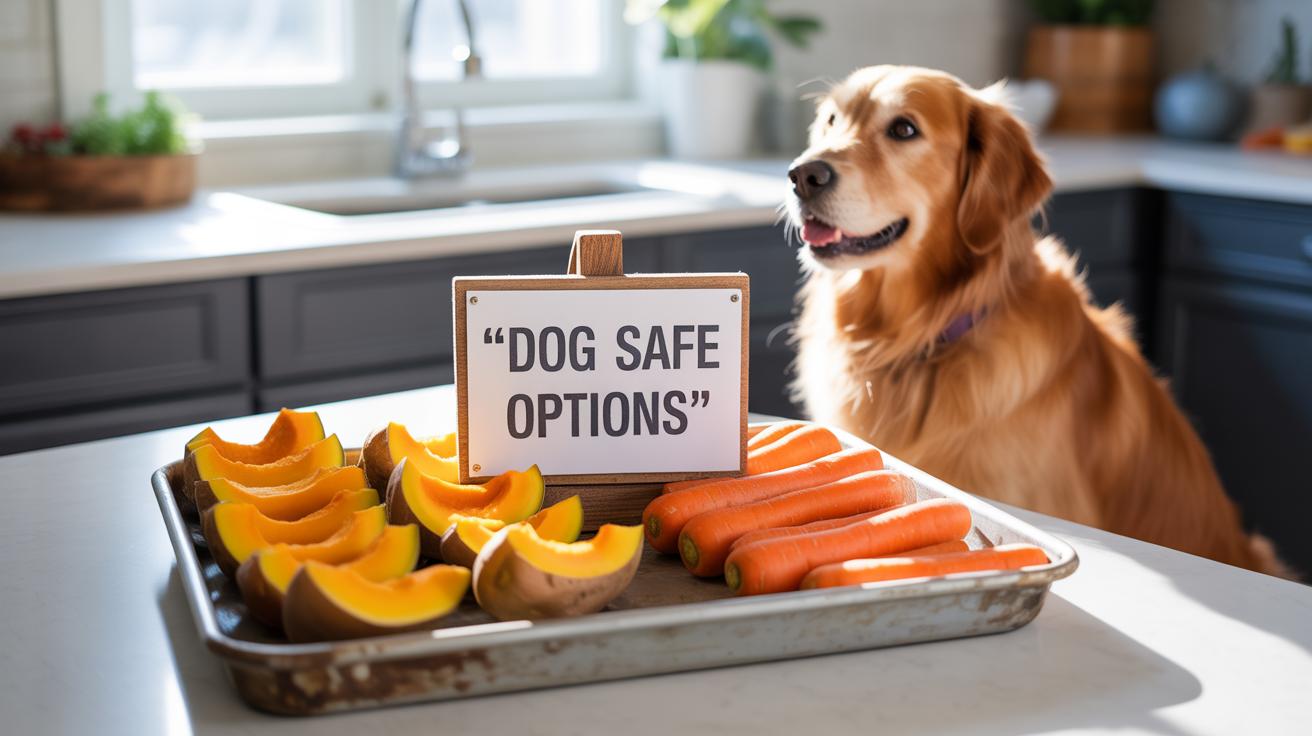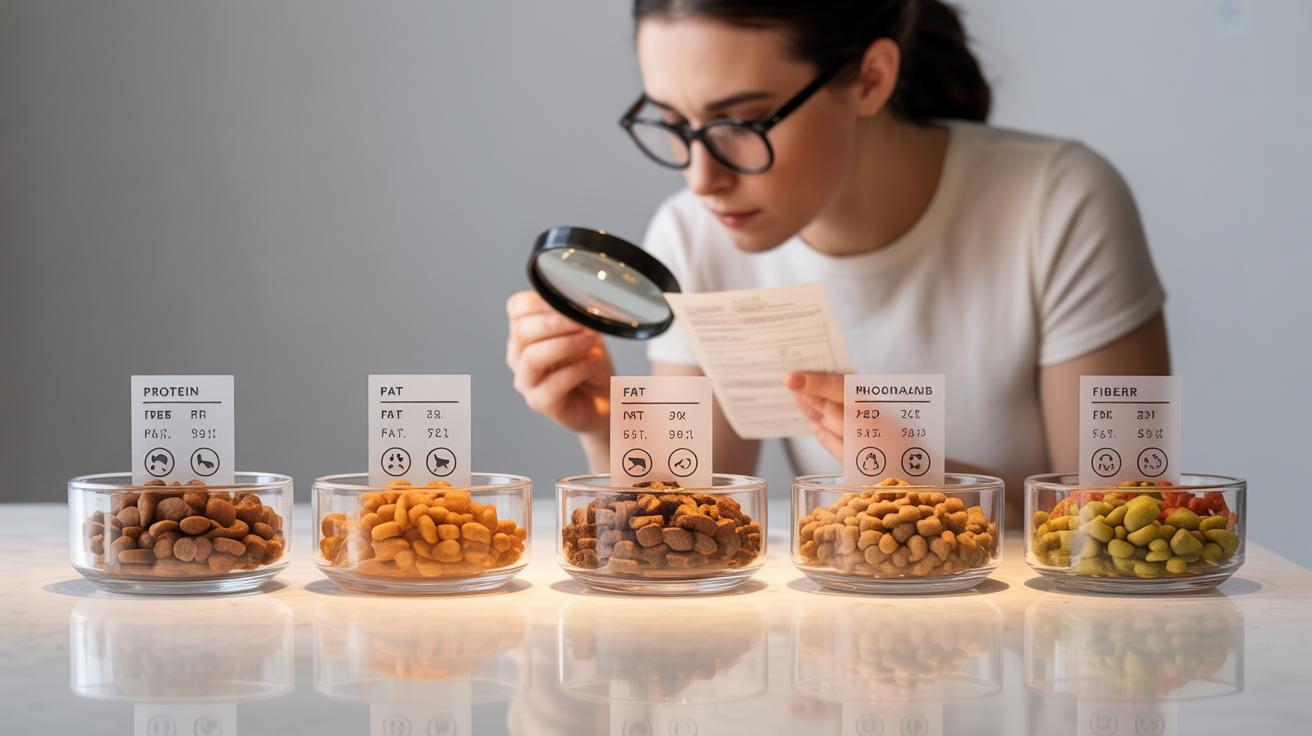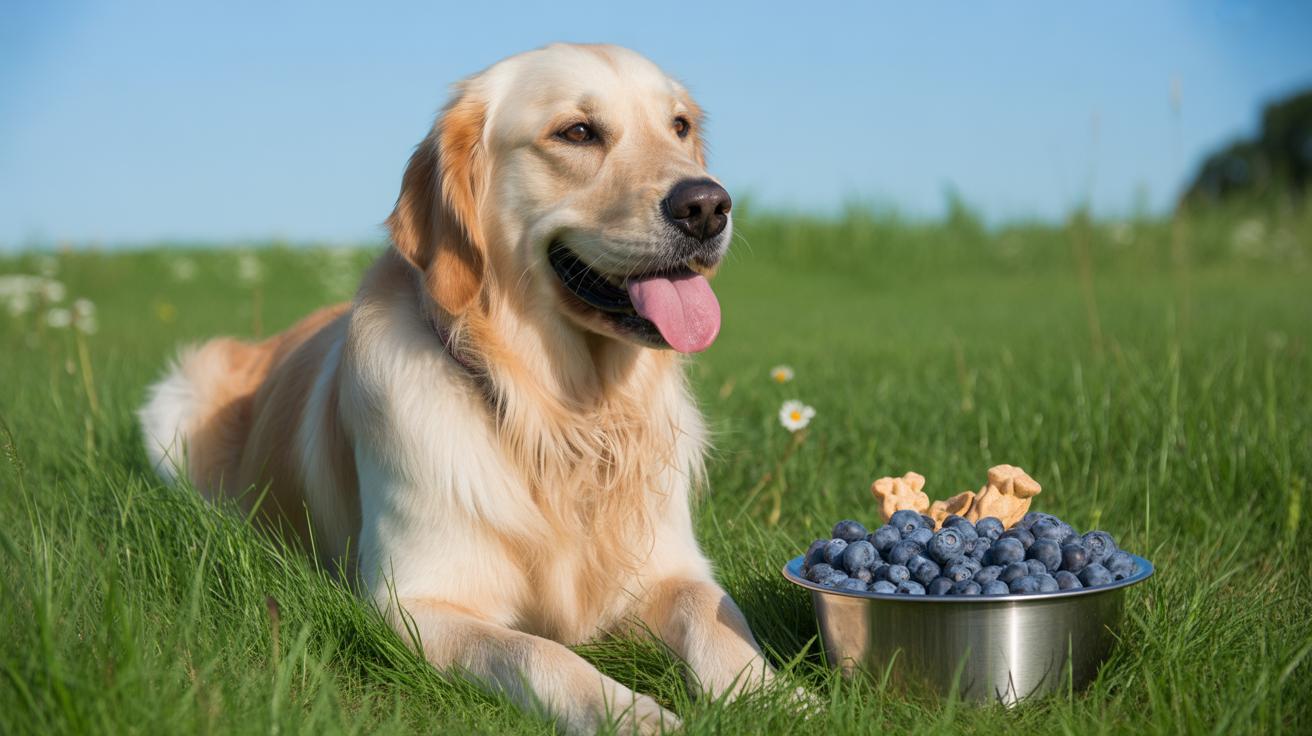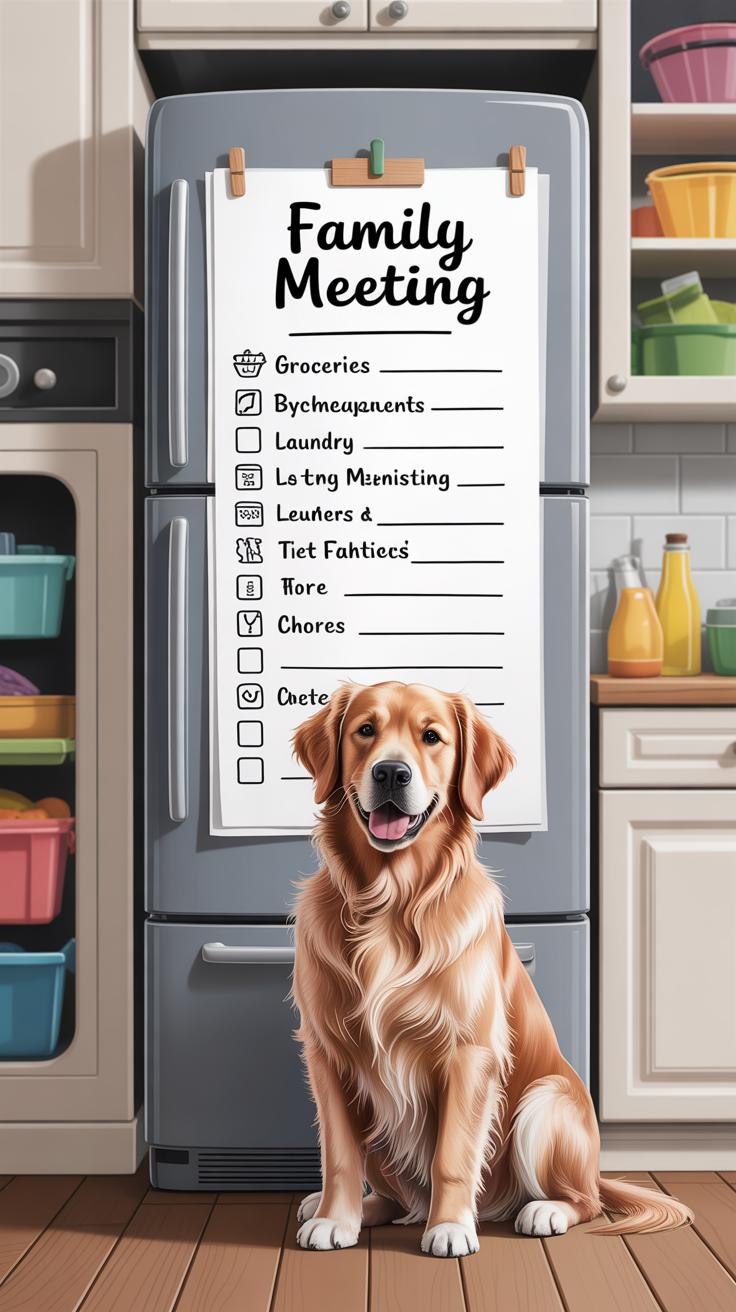Introduction
Grapes are enjoyed by many people around the world for their sweet taste and health benefits. They come in many colors and forms, including fresh grapes, raisins, and grape juice. However, while grapes are safe and healthy for humans, they can be extremely harmful to dogs. This article explores why grapes should never be given to dogs and what risks they pose to your furry friend.
Every dog owner should understand the dangers of grapes. Even a small amount can lead to serious health problems. We will explain what toxins might be involved, symptoms to watch for, and how to keep your dog safe. Knowing these facts will help you protect your pet from accidental poisoning.
What are Grapes and Why Do We Eat Them
Grape Basics and Varieties
Grapes belong to the genus Vitis, a member of the Vitaceae family. These small, round fruits grow in clusters on woody vines that can climb quite high. They come in several colors, mainly green, red, and purple, and their skin can range from smooth to slightly waxy. The texture inside is juicy, with tiny seeds in many varieties, though seedless grapes are common today.
Growing grapes requires a climate that offers warm days and cooler nights, often found in temperate regions. Soil type and drainage matter too, but grapes are surprisingly resilient. Some varieties thrive on steep hillsides, while others spread smoothly across flat vineyards. You might notice how grapes differ significantly depending on where they’re grown, which subtly changes their taste and texture.
History and Uses of Grapes
Humans have cultivated grapes for thousands of years—there’s evidence of grape farming going back to 6000 BC in parts of the Middle East. Wine, probably the most famous product from grapes, has been part of human culture for millennia, with records tracing back to ancient Egypt and Mesopotamia. Yet, fresh grapes have always been enjoyed alongside dried grapes, or raisins, both eaten as snacks and used in cooking or baking.
In fact, grapes serve many purposes beyond wine. People eat them fresh, toss them into salads, or cook them down into juices and jams. Winemaking overshadows these uses a bit, but fresh fruit markets depend heavily on table grapes. If you’ve ever stopped to pick some grapes in a garden or market, you know how different the sweet fruit tastes compared to the fermented wine that comes from it.
The Danger of Grapes to Dogs
How Grapes Harm Dogs
You might wonder why something as harmless as grapes could be dangerous for dogs. The truth is, despite all the guesswork, researchers haven’t pinpointed a single toxic compound in grapes that causes harm. Some suspect tartaric acid or possibly certain mycotoxins, but nothing definitive yet. What’s clear is that something in grapes triggers a serious reaction targeting a dog’s kidneys.
When a dog eats grapes or raisins, their kidneys can suddenly fail. This isn’t a slow process—it can strike quickly, leading to acute kidney injury, which can be life-threatening. The kidneys lose their ability to filter toxins, causing waste to build up rapidly in the blood.
It’s a tightrope walk figuring out exactly how the toxins work, but one thing’s for sure: if your dog eats even a small handful of grapes, it’s a risky situation. You don’t want to wait to see if they’re “okay.”
What Happens When a Dog Eats Grapes
If your dog gets into grapes, symptoms may show up pretty fast—within a few hours or up to a day. At first, you might notice vomiting or drooling. Then, your dog may start acting lethargic, refusing food, or showing signs of abdominal pain.
Here’s what to watch for:
- Vomiting and diarrhea
- Loss of appetite
- Weakness and lethargy
- Increased thirst and urination, then decreased urination as kidneys fail
- Abdominal discomfort or pain
If these symptoms appear, kidney damage could be underway. Sometimes dogs seem fine at first, which can be deceptive. The damage worsens silently if untreated, which is why early veterinary care is crucial.
Understanding the Toxicity Mechanism
Tartaric Acid Theory
One of the leading ideas about why grapes harm dogs points to tartaric acid. This organic acid is present in grapes and has been studied quite a bit. Researchers think it might trigger the kidney problems dogs experience after eating grapes. Some experiments found that tartaric acid, or its salts, can cause damage when introduced in certain doses. Still, most of these studies are limited and don’t fully explain why only dogs seem so sensitive. It’s also curious that the amount of tartaric acid isn’t always consistent across grape varieties, yet the toxicity risk remains high. So, while tartaric acid is a strong suspect, it’s not a complete explanation.
Other Theories on Toxicity
There are other possible culprits too, but they’re harder to pin down. Some researchers suggest mycotoxins—harmful compounds from molds that sometimes grow on grapes—might play a role. This makes sense because mold can be toxic to many species. But again, testing hasn’t confirmed this for every case. Then there’s the idea of an unknown toxin. Maybe something we haven’t identified yet exists in grapes or raisins. The truth is, the exact substance that causes toxicity remains uncertain. This ambiguity is frustrating but also reminds us to avoid grapes entirely. Why risk it when the cause is still a mystery?
Recognizing Symptoms of Grape Poisoning in Dogs
Initial Signs to Watch For
Right after your dog eats grapes or raisins, you might notice some sudden stomach trouble. Vomiting is often the first clue—sometimes within just a few hours. It’s not always constant, but if your dog starts throwing up or seems nauseous, don’t brush it off. Diarrhea can show up too, and combined with vomiting, it can quickly sap your dog’s energy.
Other early signs can be less obvious. You may see your dog acting restless or uncomfortable, pacing or whining. Sometimes they just look unwell, with a droopy posture or lack of appetite. These initial symptoms can feel like regular stomach upset, making it tricky to pinpoint grape poisoning at first. But the key is the timing, especially if you know grapes or raisins were around.
Advancing Symptoms and Kidney Failure
If not treated promptly, the sickness escalates. The most alarming stage revolves around the kidneys. Dogs may stop peeing or produce very little urine, a sign that the kidneys are suffering serious damage. You might also notice dehydration; dry gums and sunken eyes can be subtle but dangerous signals.
Other symptoms here include weakness, lethargy that goes beyond just feeling tired, and sometimes even abdominal pain. Your dog might seem confused or disoriented, and their breath can smell unusually bad. These are urgent signs—you need to get your pet to a vet immediately. Waiting can mean irreversible kidney failure, a reality that many owners have faced, sometimes wishing they’d acted faster.
Maybe it’s tempting to wait and see. That hesitation can be costly. So if you suspect your dog ate grapes, watch closely. Those early signals are your chance to act before things get much worse.
How to Prevent Grape Poisoning in Dogs
Grapes and raisins have no place where your dog can reach them. It sounds obvious, but just keeping them out of paw’s reach isn’t always enough. Dogs are surprisingly clever at finding food—especially when you think they’re not paying attention. To avoid any risk, store grapes in sealed containers in high cupboards or the fridge’s crisper drawer, where dogs seldom go.
Keep an eye on food prep areas too. Even a few grapes left on the counter for a moment can turn into a disaster if your dog manages to snatch them.
Safe Handling and Storage
Think about your daily routine. Bringing grapes home from the store? Put them away immediately, don’t leave the bag unattended. If you snack with grapes nearby, keep your dog on a leash or in another room. Oversight during meals or food prep is crucial—dogs are fast and persistent.
When you have guests or gatherings, set a rule that no grapes or raisins are given as treats, intentionally or accidentally. That simple guideline can prevent a lot of worry later.
Educating Family and Visitors
Not everyone understands how dangerous grapes are for dogs. People often assume fruits are safe across the board, so it’s on you to spread the word. Explain to family members, friends, or dog sitters that even a small amount of grapes can be harmful. Sometimes, they forget or don’t realize.
Perhaps you think your dog is slow or uninterested — don’t rely on this assumption. Make sure everyone who interacts with your dog knows what to avoid and why.
Understanding the risks, along with clear communication and proper storage, makes accidental grape ingestion less likely. It’s not just about keeping grapes out of reach—it’s about changing habits and expectations around your dog’s safety.
What To Do If Your Dog Eats Grapes
Emergency Steps at Home
If you catch your dog eating grapes, try to stay calm. Don’t wait to see if symptoms show up—that can be risky. The first thing you might try is to remove any remaining grapes from their reach. If you can safely and quickly get your dog to vomit, that could help reduce toxin absorption. Some owners use hydrogen peroxide to induce vomiting, but this only if instructed by a vet or poison control. Don’t guess here; a wrong dose could hurt more than help.
Offer your dog water to drink, but avoid giving anything else without professional advice. Watch closely for unusual behavior like lethargy, vomiting, or trouble urinating—these can show up within a few hours.
Veterinary Treatments
Once at the vet, treatment usually starts with flushing out the stomach. They might induce vomiting safely or perform a gastric lavage. Activated charcoal can be given to bind toxins, but vets decide this after evaluating your pet. Fluid therapy is a big deal here; intravenous fluids help prevent kidney damage, which is the main concern with grape poisoning.
Your vet could monitor kidney function closely over the next few days. In severe cases, hospitalization is needed for dialysis or other advanced care. Prompt action makes a difference; even if your dog seems fine initially, damage can sneak up unexpectedly. So, if you’re unsure—don’t wait. It’s better to get professional help than to guess and hope for the best.
Are All Dogs Equally at Risk
When it comes to grapes and dogs, the risk isn’t evenly spread. It’s tempting to think that all dogs react the same way, but that’s not quite how it works. Some dogs seem to handle small amounts without issue, while others fall seriously ill after just one or two grapes. This inconsistency puzzles veterinarians and pet owners alike.
Size definitely plays a role. Smaller dogs have less body mass, so even a tiny quantity of grapes might tip the scale toward toxicity. On the other hand, larger dogs still aren’t immune; they might tolerate slightly more, but the danger persists. Breed might also factor in, though there’s no definitive breed list that’s more susceptible. Some breeders suspect that dogs with pre-existing kidney issues or certain genetic markers could be at greater risk, but the data is patchy at best.
What about underlying health? A dog with compromised kidney function or a busy immune system might react worse to grape ingestion. Conversely, a healthy dog might show no symptoms, leading owners to mistakenly believe grapes are safe. Yet, because the toxic threshold isn’t clear, nobody can say for sure exactly how much is dangerous or why reactions vary.
It’s perplexing. Why do some dogs develop severe kidney failure, and others seem fine after eating grapes? Research hasn’t pinpointed a clear dose-response relationship or why some tolerate grapes better. This lack of predictability makes it a gamble—one that’s not worth taking with your pet’s health.
Other Foods Toxic to Dogs to Avoid
Dogs can get into all sorts of things that are dangerous beyond grapes. It’s not just about fruit—there’s a whole range of everyday items that might seem harmless but can cause serious issues.
Chocolate is a classic one many know about. It contains theobromine, which dogs can’t process well. Even a small amount can cause vomiting, restlessness, or worse, seizures. I remember a friend’s dog who got into a chocolate bar and ended up at the vet overnight—it was scary to see how quickly it affected him.
Avocado also pops up on lists of toxic foods. The trouble is persin, a fungicidal toxin found in the fruit, pit, and leaves. While most dogs don’t react dramatically, some do get digestive upset or even worse problems. It’s a bit confusing since a lot of dog foods now have avocado oil, so you might wonder if small amounts are truly harmful. Better safe than sorry, maybe.
Nuts are another category to watch. Macadamia nuts are especially dangerous, causing weakness, tremors, and hyperthermia. Other nuts like walnuts can make dogs sick or cause obstructions if swallowed whole. And, of course, many nuts are high in fat, leading to pancreatitis over time.
Beyond food, many household items and plants can pose risks. Things like antifreeze, cleaning products, and certain insecticides can be lethal if ingested. Even some common plants, like lilies or azaleas, might cause poisoning. It’s easy to overlook these because, well, your dog isn’t supposed to eat those. But accidents happen, and knowing what’s off-limits helps minimize dangers.
So, while grapes get a lot of attention (fairly so), don’t forget these other risks lurking in your home or yard. Have you ever stumbled on foods or plants that surprised you as harmful? It’s an ongoing learning process, for sure.
The Role of Awareness and Education
Spreading Knowledge
People don’t always realize how dangerous grapes can be for dogs. That’s something that trips up a lot of owners, even those who think they know a bit about pet safety. The truth is, sharing information about grape toxicity matters a lot. When more people hear about the risks, fewer dogs end up in emergency visits. It’s not just about knowing grapes are bad—it’s about understanding that even small amounts can cause severe harm.
Pet communities, online forums, and local groups can be great places to spread this kind of knowledge. You might think, “Well, everyone already knows grapes are dangerous,” but actually, stories of accidental poisoning keep popping up. Sometimes it’s because someone offered a grape as a treat, or leftovers weren’t properly stored. Talking openly about these risks makes it easier for dog owners to remember and stay cautious.
Being a Responsible Pet Owner
Responsibility goes beyond sticking to your dog’s usual food. You have to be vigilant—double-check what your pet might sniff out. It’s easy to forget that dogs will sometimes grab whatever they find, including harmful foods left unattended. So, asking your vet for guidance about your dog’s diet feels like a good move. They might suggest alternatives or clarify what fruits or snacks are genuinely safe.
Sometimes people hesitate to ask or think they can guess on their own. But mistakes here can be costly. Being cautious might mean fewer trips to the vet and a healthier pet long term. I’ve known people who almost handed grapes thinking it was okay—no harm done, they thought. Yet, the risk is real, and acting responsibly includes avoiding that gamble altogether.
Conclusions
Grapes and related products are toxic to dogs and can cause sudden kidney failure. The exact toxin is still unknown, but factors like tartaric acid are suspected. Dogs may show signs such as vomiting and weakness soon after eating grapes. Immediate veterinary care is critical to improve their chances of recovery.
To keep your dog safe, never offer grapes or raisins as treats. Store these fruits out of reach. Stay alert to symptoms and seek help quickly if your dog swallows grapes. Protecting your pet starts with awareness of what foods are safe and what are dangerous.

